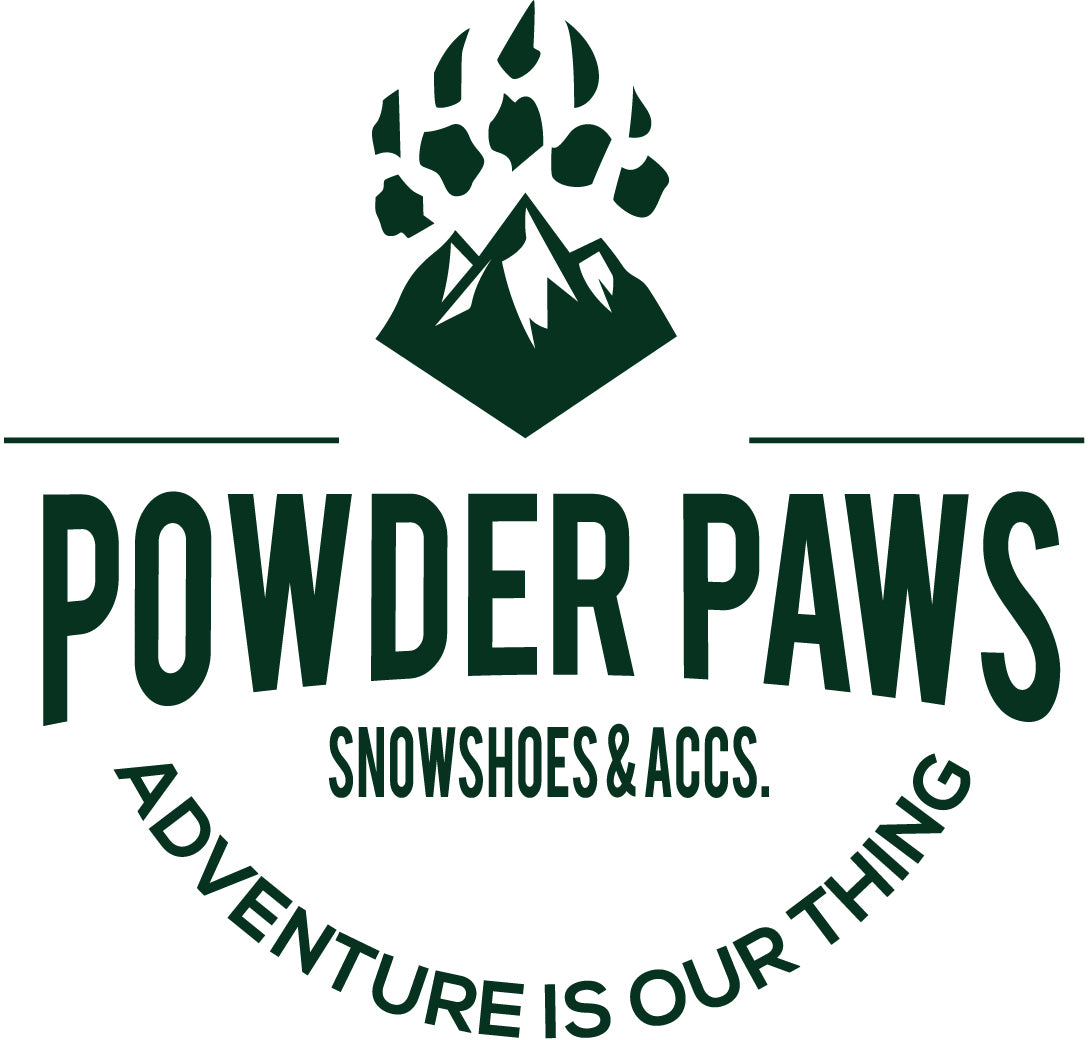What size should I get?
The two main factors in determining your snowshoe size are total weight and snow conditions. Total weight includes body weight, clothing and gear (ie. backpacks). If you plan on hiking trails that are for the most part, well-used compacted snow, you can use a shorter pair of Powder Paws snowshoes. However, if you plan on snowshoeing in deeper powder conditions, we recommend the longer sizes as these will provide better flotation. Here is a general size guide:
Powder Paws Kids 40-90 lbs
21” Powder Paws Snowshoes 90-120 lbs
25” Powder Paws Snowshoes 120-160 lbs
30” Powder Paws Snowshoes 150-210 lbs
36” Powder Paws Snowshoes 200-300 lbs
Are there mens' snowshoes or women’s snowshoes?
All our snowshoes are designed to be unisex (snowshoes for men and women). We have tapered the back ends to accommodate a narrower stride.
Is there a left and right foot?
Our snowshoes are identical for left and right foot, however, the attached bindings are marked for left and right foot.
What are the health benefits to snowshoeing?
According to Snowsports Industries America (SIA) the average calories burned per hour is 600 calories! This can be brought up to 1000 calories with increased intensity and steeper terrain. Snowshoeing will provide focused results on your hamstrings, quads and calf muscles. The use of poles makes this a full body workout, burning extra calories as well as working on strength training and toning in your arms, shoulders and back.
Are trekking poles required for snowshoeing?
No, trekking poles are not required, however, we include them in our snowshoe packages because we highly recommend them. They aid in balance, take stress off your joints and give you a full body workout. These are high quality 7075 aluminum poles with comfortable cork grips. They come with their own case and multiple attachments for using on your favourite all season hiking trails once the snow melts.
Will there be sales tax charged?
For sales within Canada we are legally required to charge GST/HST. Depending on the province you are located in, the provincial taxes (if applicable) will also be calculated at checkout. For U.S customers any taxes/duties are the responsibility of the buyer.
How can I pay?
For our online purchases we accept all major credit cards and PayPal
What kind of footwear should I use?
We recommend wearing comfortable, warm, waterproof winter boots that are temperature rated for the conditions that you will be hiking in. We do not recommend snowboard boots as they are heavy and do not allow proper movement of the foot.
What should I wear for clothing?
Before you embark on your snowshoeing adventures, be aware that what you wear will greatly influence your experience. Since you will
experience various conditions, knowing what clothing to wear while snowshoeing is of the utmost importance.
Dressing in layers is key to regulating your core body temperature by allowing you to add or reduce layers depending in conditions. There are base, mid and outer layers and depending on condition not all of them might be needed. The use of gators or waterproof pants is also recommended to keep your legs dry and prevent snow from falling into your boots.
Your base layer is the layer closest to the body, such as a form-fitting shirt or pair of tights. The purpose of the base layer is to keep you dry and warm. Thus, the base layer should be moisture-wicking or able to pull moisture away from your skin. My favourite base layer is marino wool as is is very comfortable against the skin, has natural temperature regulation and dries extremely fast if it does get wet from sweat.
Mid-layers are meant to serve as your insulator on your snowshoeing outing and are incredibly important! Even if your hiking on a warm day and you don’t think you’ll need insulation, remember to bring a mid-layer just in case. Common mid-layers we use are fleece or a high quality down for colder days.
The most important characteristic of an outer layer is to protect you from the elements, like wind and rain or snow. For that reason, you’ll want to choose an outer layer that is waterproof and able to fend off the wind, like a windbreaker or hardshell jacket, to keep you warm and dry. Typically, outer layers will come with DWR (durable water repellent) or Gore-Tex for enhanced breathability.
For warmer days with light rain/snow, a breathable softshell jacket is a helpful piece of outerwear. For colder days with heavier rain/snow, a hardshell jacket offers increased protection. If the day is incredibly cold and you would like extra insulation with your outer layer, you can also use a down jacket.
